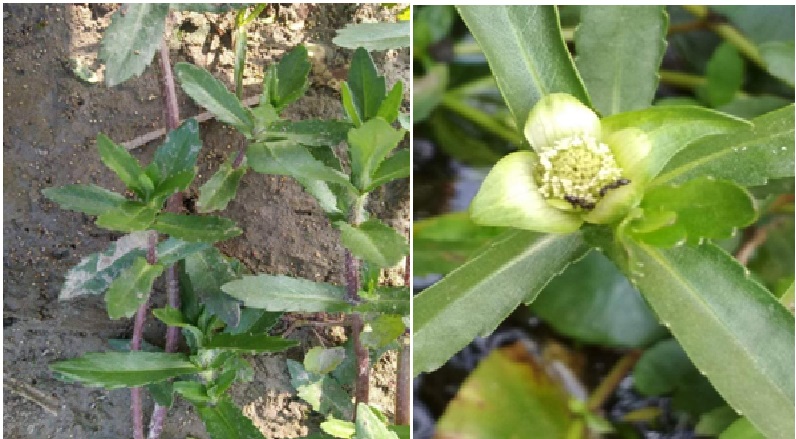Review on Pharmaco-therapeutic potential of wetland herb Enhydra fluctuans Lour (Hilamochika)
DOI:
https://doi.org/10.47070/ijapr.v11i5.2803Keywords:
Enhydra fluctuans L., Indian Marshweed, Raktakarabi, phytochemical composition, pharmacological activitiesAbstract
Enhydra fluctuans Lour, commonly known as the Indian Marshweed or Raktakarabi, holds an important place in Ayurveda, the traditional Indian system of medicine. This medicinal herb has gained attention for its pharmacological properties and therapeutic potential. Traditional Ayurvedic remedies for a variety of health issues, including fever, inflammation, wound healing, digestive disorders, and respiratory ailments, use Enhydra fluctuans L. Recent scientific studies have validated its traditional uses, revealing the presence of bioactive compounds such as flavonoids, alkaloids, phenols, and essential oils that contribute to its medicinal properties. Moreover, Enhydra fluctuans L. exhibits a wide range of pharmacological activities, including anti-inflammatory, analgesic, antimicrobial, antioxidant, hepatoprotective, immunomodulatory, and anti-cancer effects. This article aims to give a substantial overview of Enhydra fluctuans L., highlighting its botanical characteristics, historical usage, phytochemical composition, and pharmacological activities. The mechanisms underlying the therapeutic actions of Enhydra fluctuans L. involve its ability to modulate various molecular targets and signaling pathways, contributing to the regulation of immune responses, lowering oxidative stress, inhibiting inflammatory mediators, and promoting tissue regeneration. Enhydra fluctuans L. has also demonstrated promising anti-cancer potential through apoptosis induction, cell cycle arrest, and inhibition of angiogenesis and metastasis. This review critically assesses the preclinical and clinical studies on Enhydra fluctuans L., emphasizing its safety profile and potential adverse effects. Furthermore, it explores the prospects and challenges in developing Enhydra fluctuans L. as a mainstream therapeutic agent, including the need for standardized extraction techniques, identification of active compounds, formulation optimization, and rigorous clinical trials.
Downloads



